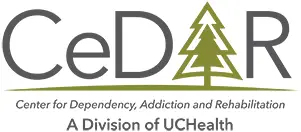ADDICTION SCIENCE Over the past few years, more patients have outreached CeDAR to address problematic or addictive patterns with the drug Kratom. What is this substance which has gathered national attention, specifically regarding regulatory concerns and safety? This article discusses the properties of Kratom for potential users, especially those in recovery from drugs and alcohol. Grown in Southeast Asia, Kratom is a plant which is harvested and sold in powder form. There are different strains, described as ‘yellow,’ ‘red’ or ‘green’ and carry some distinct psychoactive properties, not unlike different strains of cannabis. Users will fill small capsules with the powder and ingest the capsules or may blend the powder in a drink. The base compound of Kratom is called Mitragynine, and has properties similar to opioids and stimulants concurrently. This means that it can produce sedating effects for some while energizing effects for others. Because of its activity within the opioid system of the brain, withdrawal seems to be similar to mild opioid withdrawal.
Unregulated Amidst Overdose Controversy
Kratom is an unregulated drug and can be purchased at local stores or through online retailers. This has created some controversy in the medical community, as it was almost scheduled by the FDA as a bona fide drug of abuse, but the FDA experienced some opposition from lobbyist groups and legislators. Proponents describe that it is a safer drug than full opioids, can be used to enhance exercise routines, and is a natural holistic substance. An article published in association with 9News discusses some local deaths which have been attributed to overdose from Kratom.
- “Colorado coroners link kratom to at least 23 deaths since 2016” https://www.9news.com/article/news/health/colorado-coroners-link-kratom-to-at-least-23-deaths-since-2016/73-614063305
What We See at CeDAR
At CeDAR, we have noticed more individuals becoming dependent on Kratom and experiencing withdrawal symptoms similar to that of opioid withdrawal. They may feel nauseous, restless, or in physical pain when no longer ingesting the drug. Most of the individuals who have developed addictive patterns from Kratom have previously struggled with other drugs of abuse. This includes opioid painkillers, heroin or alcohol. We also notice that many individuals using Kratom are struggling with mood disorders. What we don’t fully understand is causative factors: Are people using it to ‘self-medicate’ a depressed mood, or is Kratom use contributing to someone’s depression?
The Problem with Rationalizing
For those who are in recovery, Kratom use can be a slippery slope. Does this use constitute a form of ‘cheating’ for someone seeking to quit drugs and alcohol? While being legal and accessible, we have noticed that people can start taking it without much fear or concern that it can grow into a large problem. This is complicated by the world of confusion, marketing and lobbyist groups seeking to further the sale to everyday consumers. A person can easily rationalize that Kratom use is a suitable substitute for other drug use, and this rationalizing presents its own world of problems. On a deeper level, recovery represents being present and free in life. Of those who are taking it multiple times each day, can they honestly represent that they are in recovery? The habitual and dependent use of Kratom, along with the cravings and inability to quit, are symptoms of what these individuals have developed – a new addiction. Read more CeDAR Education Articles about Addiction Science1
